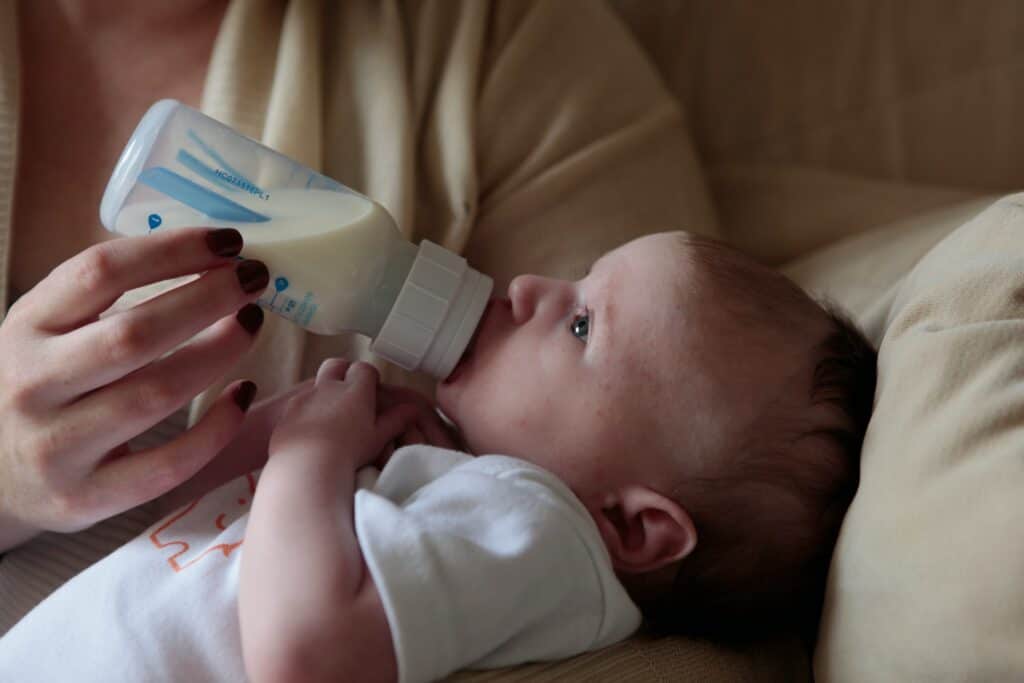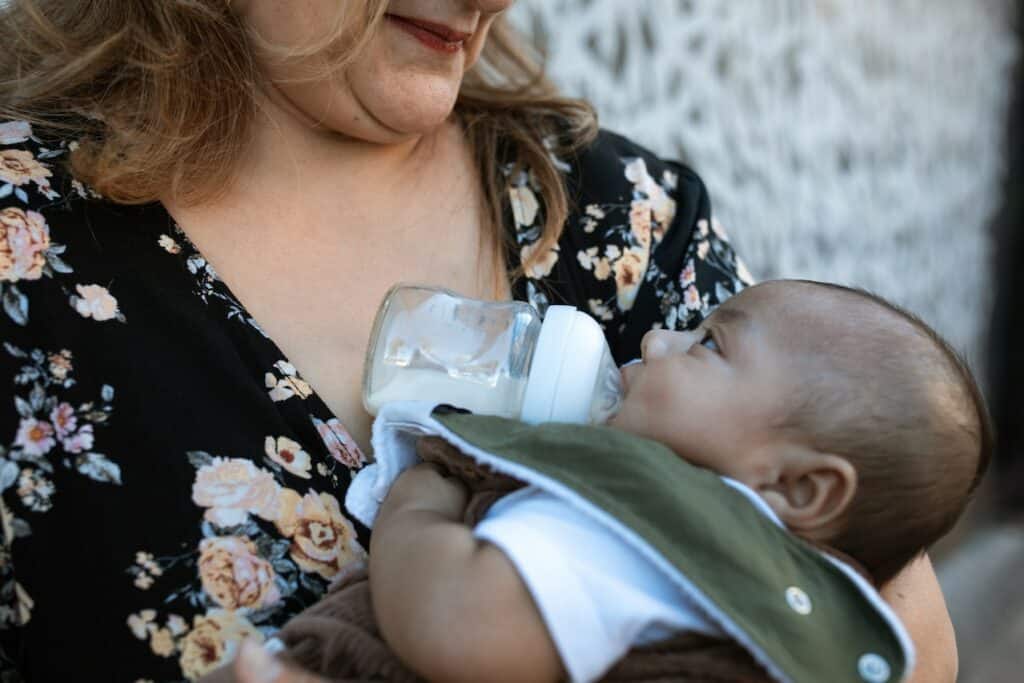New parents often have a lot of questions when it comes to caring for their newborn, especially when it comes to feeding. One common question is what size nipple is best for their baby. It’s important to choose the right size to ensure that your baby is getting the proper amount of milk and to prevent feeding difficulties.
Understanding Nipple Sizes Nipples come in a variety of sizes, and it can be overwhelming to choose the right one for your baby. Nipple size is determined by the hole size, which affects the flow of milk. Newborns typically need a slower flow to prevent choking and overfeeding. It’s important to choose a nipple that is appropriate for your baby’s age and size.
Choosing the Right Nipple Size When choosing a nipple size, it’s important to consider your baby’s age, size, and feeding habits. Some babies may need a larger nipple size if they have a strong sucking reflex, while others may need a smaller size if they have trouble latching or feeding. It’s also important to consider the type of bottle you are using, as different brands may have different nipple sizes and shapes.
Key Takeaways
- Nipple size is determined by the hole size, which affects the flow of milk.
- It’s important to choose a nipple that is appropriate for your baby’s age and size.
- When choosing a nipple size, consider your baby’s age, size, feeding habits, and the type of bottle you are using.
Understanding Nipple Sizes
When it comes to choosing the right nipple size for your newborn, it can be overwhelming to navigate the different options available. Understanding the different nipple sizes and flow rates can help you make an informed decision and ensure that your baby is getting the appropriate amount of milk at each feeding.

Newborn Nipple
Newborn nipples are designed for babies who are just starting to bottle-feed. These nipples have a small hole and a slow flow rate, which is ideal for newborns who are still learning how to suck and swallow. Newborn nipples are typically labeled as “0+” or “newborn.”
Preemie Nipple
Preemie nipples are even smaller than newborn nipples and are designed for premature babies or babies with a low birth weight. These nipples have an extra-slow flow rate to accommodate the baby’s small size and delicate feeding needs.
Slow Flow Nipple
Slow flow nipples are designed for babies who are a few weeks old and are starting to get the hang of bottle-feeding. These nipples have a slightly larger hole than newborn nipples, but still have a slow flow rate to prevent the baby from choking or taking in too much milk at once.
Medium Flow
Medium flow nipples are designed for babies who are a few months old and have developed a stronger sucking reflex. These nipples have a larger hole than slow flow nipples, but still have a moderate flow rate to prevent the baby from getting too much milk too quickly.
Fast Flow
Fast flow nipples are designed for older babies who can handle a faster flow rate. These nipples have a larger hole than medium flow nipples and allow the baby to drink more milk in a shorter amount of time.
Level 1 Nipple
Level 1 nipples are designed for babies who are just starting to bottle-feed and have a slow flow rate. These nipples are typically labeled as “0+” or “newborn.”
Level 2 Nipple
Level 2 nipples are designed for babies who are a few weeks old and have a slightly faster flow rate than level 1 nipples.
Level 3 Nipple
Level 3 nipples are designed for babies who are a few months old and have a moderate flow rate.
Level 4 Nipple
Level 4 nipples are designed for older babies who can handle a faster flow rate and want to drink more milk in a shorter amount of time.
In summary, choosing the right nipple size and flow rate is important for your baby’s feeding needs. It is recommended to start with a slow flow nipple and gradually move up to a faster flow rate as your baby grows and develops. Be sure to monitor your baby’s feeding habits and adjust the nipple size and flow rate as needed.
Choosing the Right Nipple Size
When it comes to choosing the right nipple size for your newborn, there are a few things to consider. Here are some important factors to keep in mind:

Age Considerations
Newborns typically require a smaller nipple size than older infants. Most newborns will do well with a size 0 nipple, which is designed for babies up to three months old. However, it’s important to keep in mind that every baby is different, and some may need a larger or smaller nipple size depending on their individual needs.
Latching and Feeding
The size of the nipple can play a role in how well your baby is able to latch and feed. A nipple that is too small may make it difficult for your baby to get enough milk, while a nipple that is too large may cause your baby to gag or choke. It’s important to observe your baby’s feeding habits and adjust the nipple size as needed.
Trial and Error
Choosing the right nipple size may require some trial and error. It’s important to have a variety of nipple sizes on hand so that you can experiment and find the one that works best for your baby. Some babies may prefer a slower flow, while others may need a faster flow to keep up with their feeding needs.
In summary, choosing the right nipple size for your newborn requires careful consideration of your baby’s age, feeding habits, and individual needs. It may take some trial and error to find the right nipple size, but with patience and observation, you can help ensure that your baby is getting the nourishment they need to grow and thrive.
Feeding Considerations

Flow Rates
When it comes to feeding a newborn, it’s important to consider the flow rate of the nipple. Flow rate refers to how quickly milk flows through the nipple and into the baby’s mouth. Newborns typically require a slower flow rate to prevent them from choking or getting overwhelmed while feeding. A slower flow rate also allows the baby to control the amount of milk they are taking in, which can help prevent overfeeding and reduce the risk of colic.
There are different flow rates available for nipples, ranging from slow to fast. It’s important to choose a nipple with a flow rate that is appropriate for the baby’s age and feeding abilities. Some nipples are labeled specifically for newborns, while others are labeled for older babies.
Breastfeeding vs Bottle Feeding
Breastfeeding is often recommended as the best option for newborns, as breast milk provides all the necessary nutrients and antibodies for the baby’s growth and development. Breastfeeding also promotes bonding between the mother and baby and can help reduce the risk of certain health conditions for both the mother and baby.
However, not all mothers are able or choose to breastfeed. In these cases, bottle feeding with formula can be a safe and effective alternative. It’s important to choose a formula that is appropriate for the baby’s age and nutritional needs, and to follow the instructions for preparing and storing the formula carefully.
Introduction to Solid Foods
Around 6 months of age, babies may start showing signs of readiness for solid foods. It’s important to introduce solid foods gradually and in a way that is appropriate for the baby’s age and developmental stage. The American Academy of Pediatrics recommends starting with iron-fortified rice cereal, followed by pureed fruits and vegetables, and then gradually introducing more complex textures and flavors.
It’s important to remember that solid foods should not replace breast milk or formula as the primary source of nutrition for the baby until around 12 months of age. It’s also important to avoid certain foods that may pose a choking hazard or be difficult for the baby to digest, such as nuts, popcorn, and honey.
Overall, feeding a newborn requires careful consideration of the baby’s age, developmental stage, and nutritional needs. Choosing the appropriate flow rate for the nipple, deciding between breastfeeding and bottle feeding, and introducing solid foods gradually and appropriately can all help promote healthy growth and development for the baby.
Common Issues and Solutions

Gas and Colic
Newborns often experience gas and colic due to their immature digestive systems. This can cause discomfort and fussiness during feeding times. Choosing the correct nipple size can help alleviate these issues. A slow flow nipple can help reduce the amount of air your baby swallows while feeding, which can lead to less gas and colic. Additionally, burping your baby frequently during and after feedings can help release any trapped air in their stomach.
Choking and Gagging
Choking and gagging can be scary for both baby and parents. It’s important to choose the right nipple size to avoid these issues. A nipple that is too small can cause your baby to suck too hard, leading to choking and gagging. On the other hand, a nipple that is too large can cause your baby to struggle to keep up with the flow of milk, which can also lead to choking and gagging. It’s important to monitor your baby during feedings and adjust the nipple size accordingly.
Nipple Collapse
Nipple collapse occurs when the nipple flattens during feeding, causing a disruption in milk flow. This can cause frustration for both baby and parent. Choosing the right nipple size can help prevent nipple collapse. A nipple that is too small can cause your baby to suck too hard, leading to nipple collapse. A nipple that is too large can cause your baby to struggle to keep up with the flow of milk, which can also lead to nipple collapse. It’s important to monitor your baby during feedings and adjust the nipple size accordingly. Additionally, replacing nipples regularly can help prevent nipple collapse due to wear and tear.
Materials and Shapes
When it comes to choosing the right nipple for a newborn, there are a variety of materials and shapes to consider. Each option has its own unique benefits and drawbacks, so it’s important to understand the differences between them before making a decision.
Silicone vs Latex
Silicone and latex are the two most common materials used to make nipples for newborns. Silicone nipples are generally firmer and more durable than latex nipples, making them a good choice for babies who are teething or have a strong sucking reflex. They’re also less likely to cause allergic reactions, as latex allergies are fairly common.
Latex nipples, on the other hand, tend to be softer and more flexible than silicone nipples, which can make them easier for some babies to latch onto. They also have a more natural feel, as they’re made from natural rubber. However, they’re not as durable as silicone nipples and may need to be replaced more frequently.
Orthodontic Nipples
Orthodontic nipples are designed to mimic the shape of a mother’s nipple, which can help prevent nipple confusion and make it easier for babies to switch between breastfeeding and bottle feeding. These nipples have a flattened shape and a wider base, which can help promote proper oral development and reduce the risk of dental problems later on.
Orthodontic nipples are typically made from silicone or latex, and come in a variety of sizes and flow rates to accommodate different ages and feeding preferences.
Angled Nipples
Angled nipples are designed to help reduce the amount of air that babies swallow while feeding, which can help prevent colic and other digestive issues. These nipples have a unique shape that allows the milk to flow directly into the baby’s mouth, rather than pooling at the bottom of the bottle.
Angled nipples are available in both silicone and latex, and come in a variety of sizes and flow rates to meet the needs of different babies. Some angled nipples also feature anti-colic vents or other features that can help reduce gas and fussiness.
Additional Tips and Advice
In addition to selecting the right nipple size for a newborn, there are a few additional tips and advice that caregivers can follow to ensure a successful feeding experience.

Seek Advice from a Pediatrician or Lactation Consultant
If a caregiver is unsure about which nipple size to choose, they can seek advice from a pediatrician or lactation consultant. These professionals can provide guidance and recommendations based on the individual needs of the baby.
Use the Correct Positioning
Proper positioning is essential for successful feeding. Caregivers should hold the baby in a comfortable position that allows them to latch onto the nipple easily. They should also ensure that the baby’s head is slightly elevated to prevent choking or spitting up.
Clean and Sterilize Nipples Regularly
To prevent the spread of germs and bacteria, caregivers should clean and sterilize nipples regularly. They can do this by washing them with warm, soapy water and then boiling them for a few minutes. Alternatively, they can use a sterilizing solution or steam sterilizer.
Monitor Feeding Habits
Caregivers should monitor the baby’s feeding habits to ensure that they are getting enough milk. Signs that the baby is not getting enough milk include fussiness, lack of weight gain, and infrequent bowel movements. If a caregiver has concerns about the baby’s feeding habits, they should seek advice from a pediatrician or lactation consultant.
By following these additional tips and advice, caregivers can ensure that their newborn has a successful feeding experience.
Also, read: How to Take Care of Newborn
Frequently Asked Questions
What is the appropriate nipple size for a newborn?
The appropriate nipple size for a newborn is usually the smallest size, which is typically labeled as “Newborn” or “Preemie”. This size is designed to fit the baby’s small mouth and provide a slow flow of milk.
When should I switch to a larger nipple size for my baby?
You should switch to a larger nipple size for your baby when they start to show signs of frustration during feeding, such as pulling away from the bottle or sucking harder than usual. This usually occurs when the baby is around 3-4 months old.
What are the signs that my baby needs a faster nipple flow?
The signs that your baby needs a faster nipple flow include becoming fussy during feedings, taking longer than usual to finish a bottle, and falling asleep during feedings. These signs may indicate that your baby is having difficulty getting enough milk from the bottle.
What are the best bottle nipple sizes for Dr. Brown bottles?
The best bottle nipple size for Dr. Brown bottles depends on the age and feeding habits of your baby. The company offers a range of nipple sizes, from Preemie to Y-Cut, to accommodate different feeding needs.
Can newborns use size 1 nipples?
Newborns can use size 1 nipples, but it is usually recommended to use a smaller nipple size, such as “Newborn” or “Preemie”, to ensure a proper fit and slow flow of milk.
What age is the appropriate size for a size 1 nipple?
The appropriate age for a size 1 nipple is typically from birth to 3 months old. After that, you may need to switch to a larger nipple size to accommodate your baby’s growing feeding needs.

Iesha is a loving mother of 2 beautiful children. She’s an active parent who enjoys indoor and outdoor adventures with her family. Her mission is to share practical and realistic parenting advice to help the parenting community becoming stronger.
